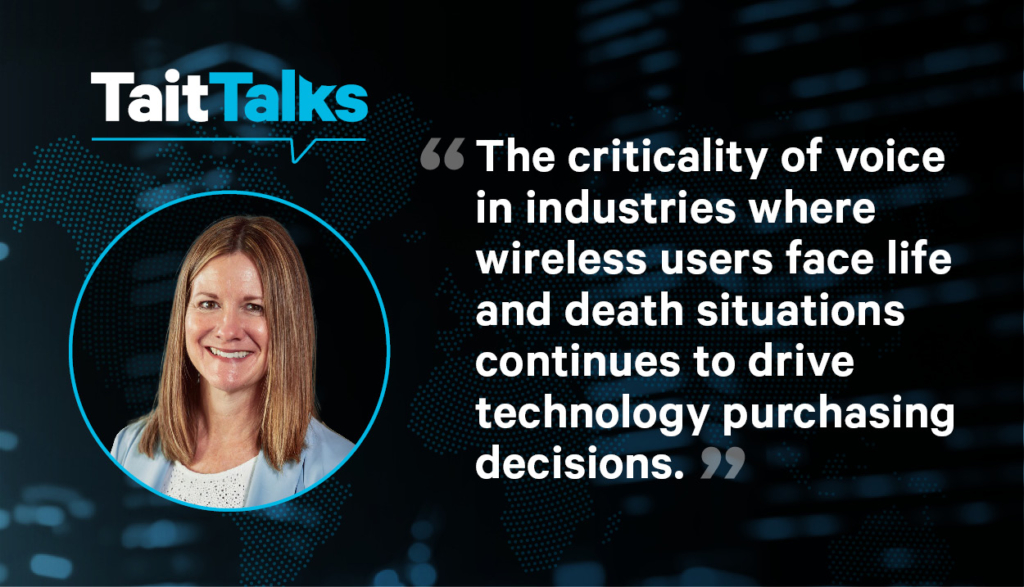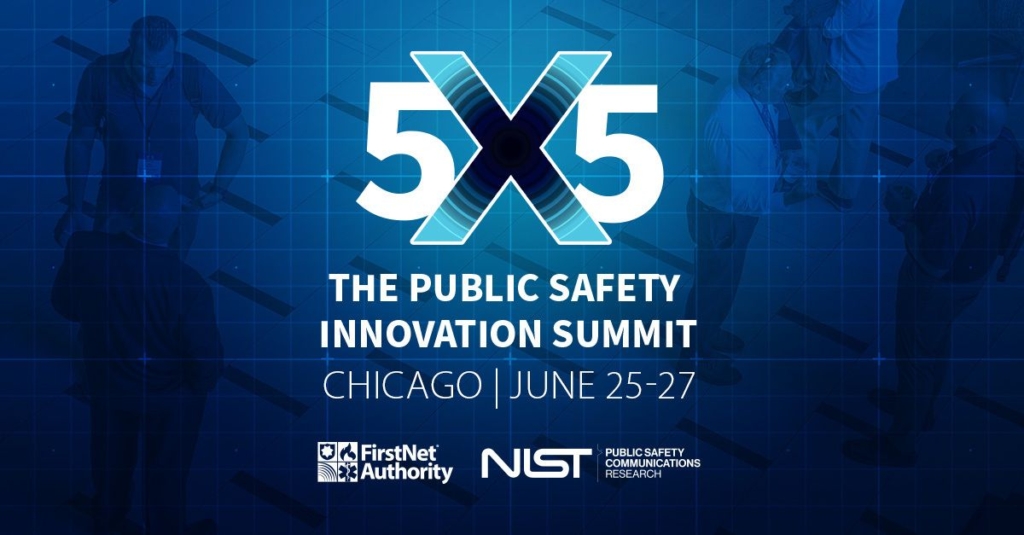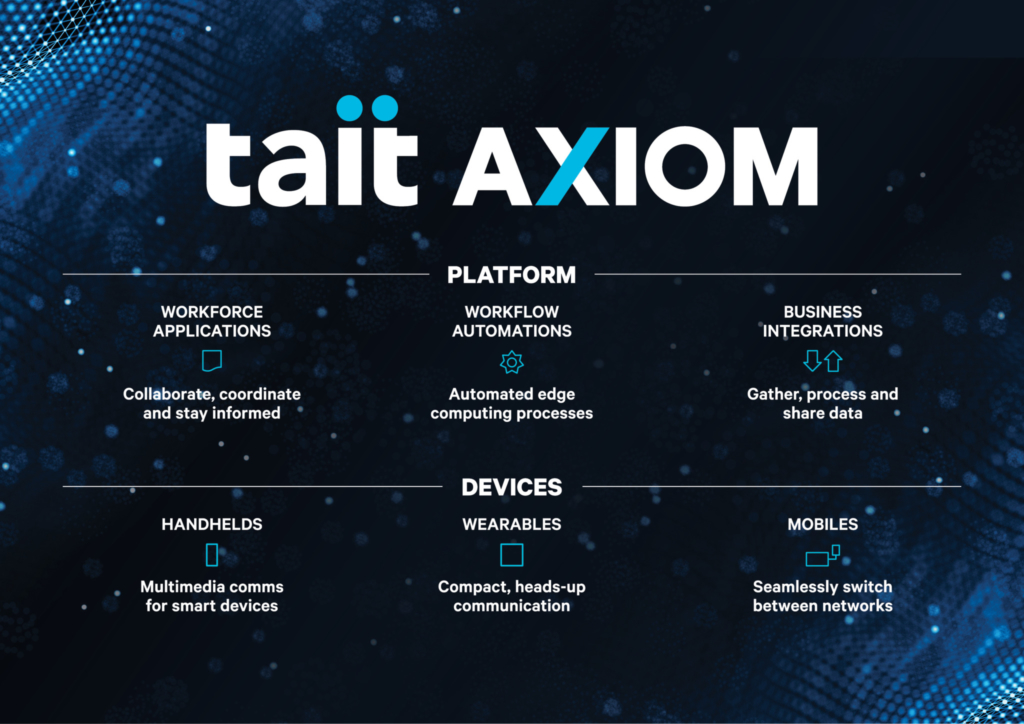While the importance of broadband technology for critical communications solutions cannot be overstated, the criticality of voice in industries where wireless users face life and death situations continues to drive technology decisions. Both technologies have their place in our industry. Join Sandra Wendelken – Tait Market Insights Manager as we reiterate the criticality of mission-critical voice communications.

Having access to reliable data is essential for police officers, firefighters, utility workers, transportation agency employees, field staff at energy firms, and many other employees in mission-critical industries. The number of options for broadband services is increasing, the technology is evolving, and new use cases will continue to help workers be prepared to do their jobs more safely and efficiently.
While we all know broadband is here to stay, mission-critical voice services are not going away either. For years, some broadband proponents have suggested the death of voice-only services and technologies is imminent. That prediction has not played out, however. Voice remains the “killer app” for enterprises and the public sector, even in the era of 5G technology.

Consider a police officer who is pursuing a fleeing suspect. The officer needs to quickly speak to dispatch for backup; there is no time to send a text or photo or pull up background information in that moment. The officer needs to be able to immediately describe the situation through voice via police radio communications. For firefighters, if a building diagram cannot be sent, there is no immediate danger, but if a voice call for backup does not go through, lives are at stake.
As my colleague Paul Elmes said so succinctly:
“Voice offers a far richer medium. The human ear has evolved to detect auditory cues, such as variations in tone, pitch and volume, which can convey emotional nuances. The ability to discern emotions like fear through tone of voice is hardwired into our biology. Identifying distress in a colleague’s voice triggers an instinctive response, with potentially life-saving immediacy.”
Coverage goes hand in hand with mission-critical voice. Without a signal, an officer or firefighter cannot call for help. Mission-critical voice networks are private networks that provide coverage wherever users need to be able to communicate with the lowest latency and highest reliability. Workers rely on real time communication networks that offer tailored coverage in tunnels, mines, stairwells, and basements for efficient daily communications, as well as emergency communications during unforeseen incidents.
Cellular networks sometimes have outages. Major cellular system failures have happened already in 2024 to more than one mobile operator around the globe. Having a parallel LMR voice-centric network helps avoid a total operational blackout during emergency scenarios.
The Public Safety Communications Research (PSCR) program, part of the U.S. federal National Institute of Standards and Technology (NIST) organization under the Department of Commerce, has been conducting research and development into public safety communications for decades. In the early 2000s before PSCR was established, NIST public safety researchers set up the first interoperability testing program among Project 25 (P25) vendors, now called the P25 Compliance Assessment Program (CAP) under the guidance of the Department of Homeland Security (DHS).
PSCR’s researchers now focus on several areas of public safety broadband, including unmanned aerial systems (UAS), location-based services, augmented reality (AR) and other areas. Even with all the focus and funding for public safety broadband research, mission-critical voice is still one of PSCR’s five research portfolios. The PSCR team has done years of work around mouth-to-ear (M2E) latency, device-to-device modeling, voice intelligibility, mission-critical push to talk (MCPTT), and ensuring interoperability between P25 and broadband technologies such as LTE, Wi-Fi, and 5G services. Another PSCR research portfolio is user interface/user experience (UI/UX), and even that portfolio includes voice elements. One UI/UX project is designed to investigate the use of virtual reality (VR) training for public safety by focusing on one of the most natural things first responders do: talk. (PSCR is conducting a three-day summit in June in Chicago called 5×5: The Public Safety Innovation Summit if you want to learn more.)
While Tait Communications has evolved its portfolio with the TAIT AXIOM Broadband Solutions to address the expansion of mission-critical communications into broadband technology, the company was founded on principles to address customers’ requirements for mission-critical voice communications. Tait has not forgotten the importance of emergency services voice during the decades since, while also acknowledging the complementary role that data plays with mission-critical voice networks.
That is why Tait continues to innovate around voice. From the TP9800 multiband portable radios to the multimode TB9400 P25/DMR base station with industry-leading RF performance and flexibility to upcoming products including a multiband, multiprotocol P25 and Digital Mobile Radio (DMR) portable radio, Tait is proud to be the most reliable mission-critical voice equipment provider. We go beyond for a safer world.
Blog authored by: Sandra Wendelken – Market Insights Manager | Tait Communications
Read the previous Tait Talks: New Year, New Funding Resources







